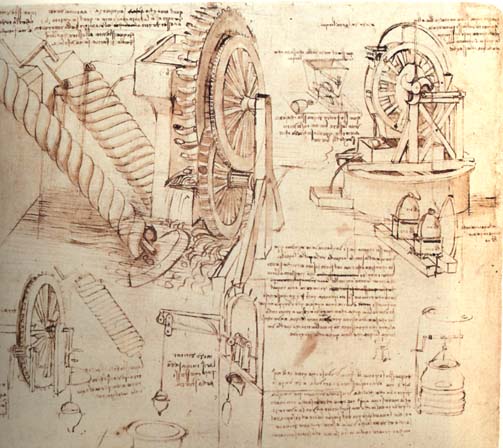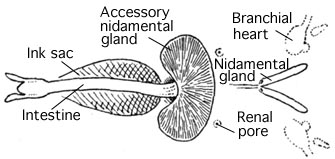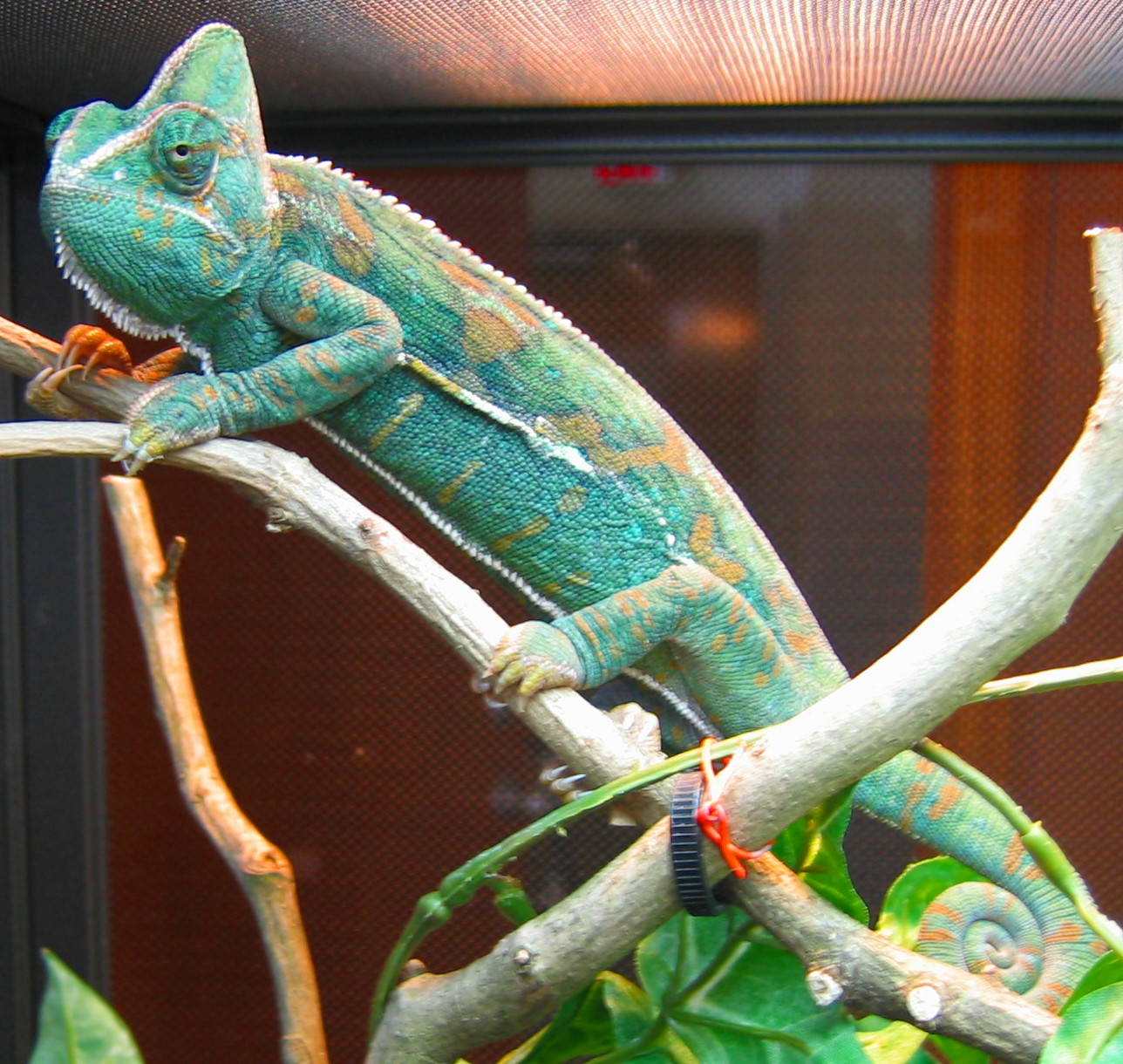|
Sepia Pharaonis
The pharaoh cuttlefish (''Sepia pharaonis'') is a large cuttlefish species, growing to 42 cm in mantle length and 5 kg in weight.Reid, A., P. Jereb, & C.F.E. Roper 2005. Family Sepiidae. ''In:'' P. Jereb & C.F.E. Roper, eds. ''Cephalopods of the world. An annotated and illustrated catalogue of species known to date. Volume 1. Chambered nautiluses and sepioids (Nautilidae, Sepiidae, Sepiolidae, Sepiadariidae, Idiosepiidae and Spirulidae)''. FAO Species Catalogue for Fishery Purposes. No. 4, Vol. 1. Rome, FAO. pp. 57–152. It is also known as seiche pharaon. ''Sepia pharaonis'' is likely a complex of at least three species, ''Sepia pharaonis I'', commonly located in the Red Sea and Persian Gulf, ''S. pharaonis II'', located from Japan to the Gulf of Thailand and northern Australia; and ''S. pharaonis III'', located from the Indian Ocean to the Andaman Sea. The type specimen was collected in the Gulf of Suez and is deposited at the Museum für Naturkunde in Berlin. Rang ... [...More Info...] [...Related Items...] OR: [Wikipedia] [Google] [Baidu] |
Christian Gottfried Ehrenberg
Christian Gottfried Ehrenberg (19 April 1795 – 27 June 1876) was a German naturalist, zoologist, comparative anatomist, geologist, and microscopist. Ehrenberg was an evangelist and was considered to be of the most famous and productive scientists of his time. Early collections The son of a judge, Christian Gottfried Ehrenberg was born in Delitzsch, near Leipzig. He first studied theology at the University of Leipzig, then medicine and natural sciences in Berlin and became a friend of the famous explorer Alexander von Humboldt. In 1818, he completed his doctoral dissertation on fungi, ''Sylvae mycologicae Berolinenses.'' In 1820–1825, on a scientific expedition to the Middle East with his friend Wilhelm Hemprich, he collected thousands of specimens of plants and animals. He investigated parts of Egypt, the Libyan Desert, the Nile valley and the northern coasts of the Red Sea, where he made a special study of the corals. Subsequently, parts of Syria, Arabia and Abyss ... [...More Info...] [...Related Items...] OR: [Wikipedia] [Google] [Baidu] |
Lessepsian Migration
The Lessepsian migration (also called Erythrean invasion) is the migration of marine species across the Suez Canal, usually from the Red Sea to the Mediterranean Sea, and more rarely in the opposite direction. When the canal was completed in 1869, fish, crustaceans, mollusks, and other marine animals and plants were exposed to an artificial passage between the two naturally separate bodies of water, and cross-contamination was made possible between formerly isolated ecosystems. The phenomenon is still occurring today. It is named after Ferdinand de Lesseps, the French diplomat in charge of the canal's construction. The migration of invasive species through the Suez Canal from the Indo-Pacific region has been facilitated by many factors, both abiotic and anthropogenic, and presents significant implications for the ecological health and economic stability of the contaminated areas; of particular concern is the fisheries industry in the Eastern Mediterranean. Despite these threats ... [...More Info...] [...Related Items...] OR: [Wikipedia] [Google] [Baidu] |
Sepia (color)
Sepia is a reddish-brown color, named after the rich brown pigment derived from the ink sac of the common cuttlefish ''Sepia''. The word ''sepia'' is the Latinized form of the Greek σηπία, ''sēpía'', cuttlefish. In the visual arts Sepia ink was commonly used for writing in Greco-Roman civilization. It remained in common use as an artist's drawing material until the 19th century. Grisaille is a painting technique developed in the 14th century in which a painting is rendered solely in tones of gray, sepia, or dark green. In the last quarter of the 18th century, Professor Jacob Seydelmann of Dresden developed a process to extract and produce a concentrated form of sepia for use in watercolors and oil paints. Sepia toning is a chemical process used in photography which changes the appearance of black-and-white prints to brown. The color is now often associated with antique photographs. Most photo graphics software programs and many digital cameras include a sepia tone filte ... [...More Info...] [...Related Items...] OR: [Wikipedia] [Google] [Baidu] |
Cephalopod Ink
Cephalopod ink is a dark-coloured or luminous ink released into water by most species of cephalopod, usually as an escape mechanism. All cephalopods, with the exception of the Nautilidae and the Cirrina (deep-sea octopuses), are able to release ink to confuse predators. The ink is released from the ink sacs (located between the gills) and is dispersed more widely when its release is accompanied by a jet of water from the siphon. Its dark color is caused by its main constituent, melanin. Each species of cephalopod produces slightly differently coloured inks; generally, octopuses produce black ink, squid ink is blue-black, and cuttlefish ink is a shade of brown. A number of other aquatic molluscs have similar responses to attack, including the gastropod clade known as sea hares. Types of ink shapes The shapes taken by ink releases are classified as six types: * pseudomorphs; * pseudomorph series; * ink ropes; * clouds/smokescreens; * diffuse puffs; * mantle fills. Inking be ... [...More Info...] [...Related Items...] OR: [Wikipedia] [Google] [Baidu] |
Suiyuan Shidan
Recipes from the Garden of Contentment () is a work on cooking and gastronomy written by the Qing-dynasty painter and poet Yuan Mei. It is known in English under various titles, including ''Food Lists of the Garden of Contentment'', ''Menus from the Garden of Contentment'', ''Recipes from Sui Garden'' and ''The Way of Eating''. It was originally published in 1792 (the 57th year of Qianlong Emperor), and contains instructions and critiques on Chinese cuisine as well as a large number of recipes of dishes from the period. It was updated by Xia Chuanzheng in the late 19th century, and not translated into English in complete form until 2018. Content The work reflects Yuan's "orthodox" literati stance on Chinese cuisine, which derided the opulent displays and dishes in banquets of his time. Yuan also resented what he regarded as the corruption of Chinese food by Manchu cooks. The work contains a preface, two chapters on gastronomy, and 12 chapters on recipes using various ingredients: # ... [...More Info...] [...Related Items...] OR: [Wikipedia] [Google] [Baidu] |
Gastronomy
Gastronomy is the study of the relationship between food and culture, the art of preparing and serving rich or delicate and appetizing food, the cooking styles of particular regions, and the science of good eating. One who is well versed in gastronomy is called a gastronome, while a gastronomist is one who unites theory and practice in the study of gastronomy. Practical gastronomy is associated with the practice and study of the preparation, production, and service of the various foods and beverages, from countries around the world. Theoretical gastronomy supports practical gastronomy. It is related with a system and process approach, focused on recipes, techniques and cookery books. Food gastronomy is connected with food and beverages and their genesis. Technical gastronomy underpins practical gastronomy, introducing a rigorous approach to evaluation of gastronomic topics. Etymology Archestratus wrote a guide to the foods of the Mediterranean in the form of a poem called "Gastron ... [...More Info...] [...Related Items...] OR: [Wikipedia] [Google] [Baidu] |
Qing Dynasty
The Qing dynasty ( ), officially the Great Qing,, was a Manchu-led imperial dynasty of China and the last orthodox dynasty in Chinese history. It emerged from the Later Jin dynasty founded by the Jianzhou Jurchens, a Tungusic-speaking ethnic group who unified other Jurchen tribes to form a new "Manchu" ethnic identity. The dynasty was officially proclaimed in 1636 in Manchuria (modern-day Northeast China and Outer Manchuria). It seized control of Beijing in 1644, then later expanded its rule over the whole of China proper and Taiwan, and finally expanded into Inner Asia. The dynasty lasted until 1912 when it was overthrown in the Xinhai Revolution. In orthodox Chinese historiography, the Qing dynasty was preceded by the Ming dynasty and succeeded by the Republic of China. The multiethnic Qing dynasty lasted for almost three centuries and assembled the territorial base for modern China. It was the largest imperial dynasty in the history of China and in 1790 the f ... [...More Info...] [...Related Items...] OR: [Wikipedia] [Google] [Baidu] |
Dried Shredded Squid
Dried shredded squid is a dried, shredded, seasoned, seafood product, made from squid or cuttlefish, commonly found in coastal Asian countries, Russia, and Hawaii. The snack is also referred to as dried shredded cuttlefish. History and origins Historically, squid is common in Pacific coastal regions of East Asia and Southeast Asia. After the packaged form began shipping to English-speaking regions, the Japanese word ''surume'' and ''yóu yú sī'' in Chinese for this form of seafood was translated as "dried shredded squid" and imprinted on packages. The snack was popularized, sold, and consumed regularly in Hong Kong during the 1970s. Shredded squid began being sold in Macau as an addition to their almond biscuit. In China, it is usually considered to be a light snack, sold in bags in many department stores in major cities. In Japan, dried shredded squid is popularly served as an '' otsumami'' (snack consumed while drinking alcohol). In Korean cuisine, dried shredded squid is eaten ... [...More Info...] [...Related Items...] OR: [Wikipedia] [Google] [Baidu] |
Philippines
The Philippines (; fil, Pilipinas, links=no), officially the Republic of the Philippines ( fil, Republika ng Pilipinas, links=no), * bik, Republika kan Filipinas * ceb, Republika sa Pilipinas * cbk, República de Filipinas * hil, Republika sang Filipinas * ibg, Republika nat Filipinas * ilo, Republika ti Filipinas * ivv, Republika nu Filipinas * pam, Republika ning Filipinas * krj, Republika kang Pilipinas * mdh, Republika nu Pilipinas * mrw, Republika a Pilipinas * pag, Republika na Filipinas * xsb, Republika nin Pilipinas * sgd, Republika nan Pilipinas * tgl, Republika ng Pilipinas * tsg, Republika sin Pilipinas * war, Republika han Pilipinas * yka, Republika si Pilipinas In the recognized optional languages of the Philippines: * es, República de las Filipinas * ar, جمهورية الفلبين, Jumhūriyyat al-Filibbīn is an archipelagic country in Southeast Asia. It is situated in the western Pacific Ocean and consists of around 7,641 islands t ... [...More Info...] [...Related Items...] OR: [Wikipedia] [Google] [Baidu] |
Leucophore
Chromatophores are cells that produce color, of which many types are pigment-containing cells, or groups of cells, found in a wide range of animals including amphibians, fish, reptiles, crustaceans and cephalopods. Mammals and birds, in contrast, have a class of cells called melanocytes for coloration. Chromatophores are largely responsible for generating skin and eye colour in ectothermic animals and are generated in the neural crest during embryonic development. Mature chromatophores are grouped into subclasses based on their colour (more properly "hue") under white light: xanthophores (yellow), erythrophores (red), iridophores (reflective / iridescent), leucophores (white), melanophores (black/brown), and cyanophores (blue). While most chromatophores contain pigments that absorb specific wavelengths of light, the color of leucophores and iridophores is produced by their respective scattering and optical interference properties. Some species can rapidly change colour through ... [...More Info...] [...Related Items...] OR: [Wikipedia] [Google] [Baidu] |
Iridophore
Chromatophores are cells that produce color, of which many types are pigment-containing cells, or groups of cells, found in a wide range of animals including amphibians, fish, reptiles, crustaceans and cephalopods. Mammals and birds, in contrast, have a class of cells called melanocytes for coloration. Chromatophores are largely responsible for generating skin and eye colour in ectothermic animals and are generated in the neural crest during embryonic development. Mature chromatophores are grouped into subclasses based on their colour (more properly "hue") under white light: xanthophores (yellow), erythrophores (red), iridophores (reflective / iridescent), leucophores (white), melanophores (black/brown), and cyanophores (blue). While most chromatophores contain pigments that absorb specific wavelengths of light, the color of leucophores and iridophores is produced by their respective scattering and optical interference properties. Some species can rapidly change colour through ... [...More Info...] [...Related Items...] OR: [Wikipedia] [Google] [Baidu] |
Chromatophore
Chromatophores are cells that produce color, of which many types are Biological pigment, pigment-containing cells, or groups of cells, found in a wide range of animals including amphibians, fish, reptiles, crustaceans and cephalopods. Mammals and birds, in contrast, have a class of cells called melanocytes for animal coloration, coloration. Chromatophores are largely responsible for generating skin and eye color, eye colour in ectothermic animals and are generated in the neural crest during embryonic development. Mature chromatophores are grouped into subclasses based on their colour (more properly "hue") under white light: xanthophores (yellow), erythrophores (red), iridophores (reflective / iridescence, iridescent), leucophores (white), melanophores (black/brown), and cyanophores (blue). While most chromatophores contain pigments that absorb specific wavelengths of light, the color of leucophores and iridophores is produced by their respective scattering and optical interference ... [...More Info...] [...Related Items...] OR: [Wikipedia] [Google] [Baidu] |






